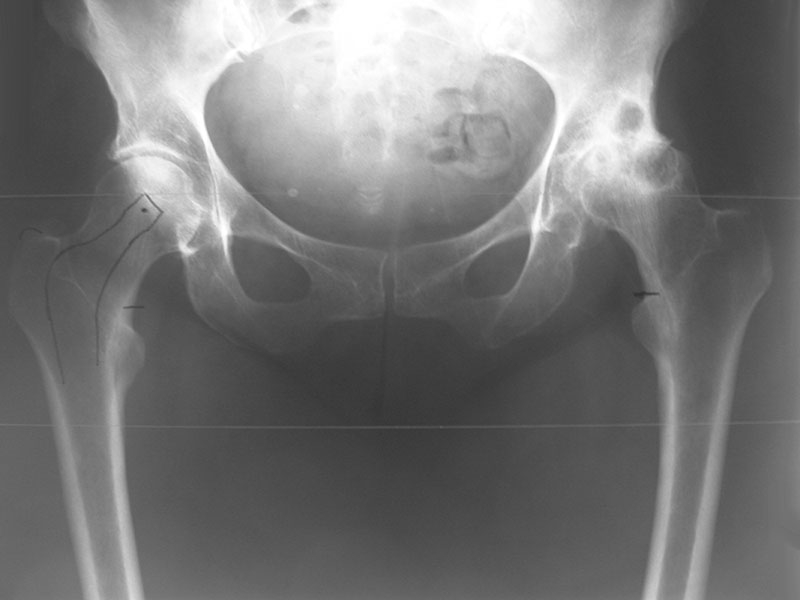Hip Arthritis
Many forms of arthritis have been described. Osteoarthritis is the most common form characterized by the break-down of the joint’s cartilage. The exact cause of osteoarthritis is unknown but it may occur in families (genetic predisposition), post-injury or as a result of an infection in the joint.

(Figure 2. Severe Osteoarthritis of the left hip)
The next most common form of arthritis is known as rheumatoid arthritis. This is a chronic inflammatory disease of the joint and soft tissues often resulting in the rapid onset of pain, swelling and stiffness with marked joint destruction. Rheumatoid arthritis is more common in women and is caused by the body’s own immune system attacking the joints, often affecting the small joints of the body first i.e. those of the hands and fingers before involving the larger lower limb joints.
Other forms of arthritis are less common and broadly categorized into the term “inflammatory arthritis” including such conditions as ankylosing spondylitis, systemic lupus erythematosus (SLE), gout and juvenile arthritis.
Arthritis of the hip joint often has an insidious onset characterized by the groin, lateral thigh or less commonly buttock pain which may radiate down the leg to the knee and beyond. The pain is worse with activity, limits walking distance and often will cause disturbance of sleep. Early morning stiffness is a common symptom and increases as the disease progresses, often resulting in the inability to reach down to put on one’s socks and shoes.
The diagnosis of arthritis is usually made on the basis of the symptom pattern, stiffness and irritability of the joint along with X-ray changes.

(Figure 3. Left total Hip replacement)
